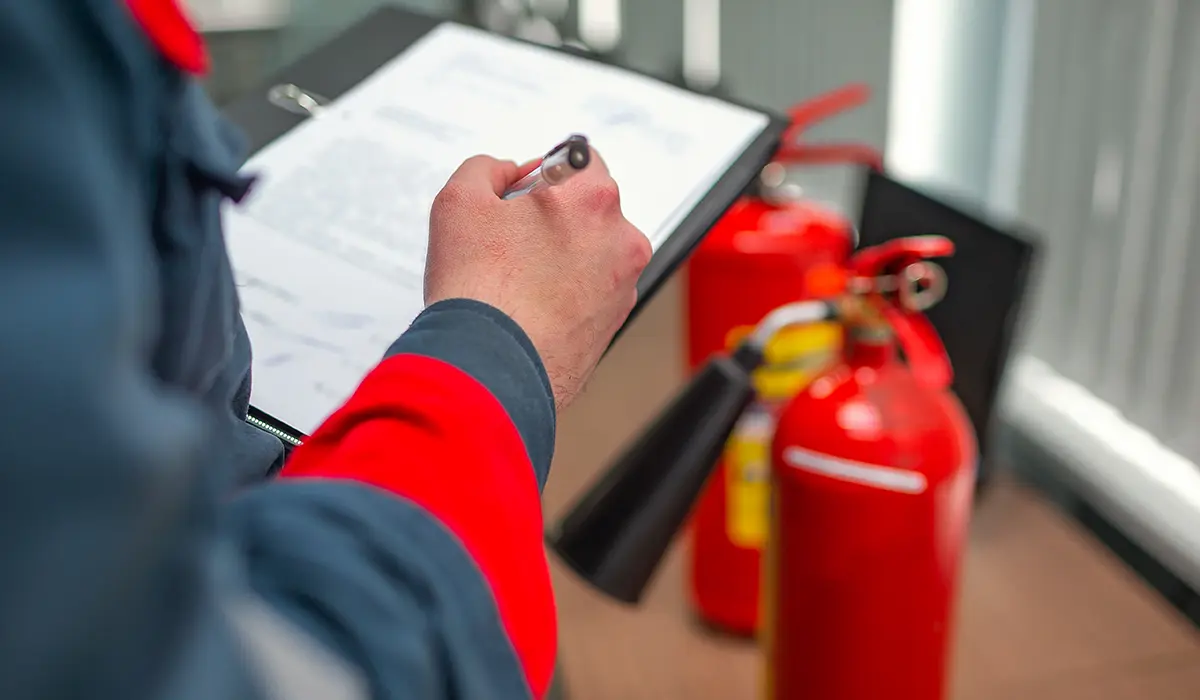Fire extinguishers are a crucial piece of fire safety equipment, and their importance cannot be overstated. In the unfortunate event of a fire, the last thing you want is to find yourself relying on a piece of equipment that fails to function. This kind of situation could have dire consequences and is often the result of neglecting proper care and maintenance, such as failing to conduct regular fire extinguishers inspection. Ensuring that your fire extinguishers are in good working order is not just a recommended practice; its a responsibility that could save lives and property.
Many people mistakenly believe that once fire alarms and extinguishers have been installed, their fire safety duties are complete. This misconception is not only incorrect but also dangerous. As a business owner, a landlord, or simply a responsible individual in charge of a household, it is your duty to ensure that all fire safety equipment, including alarms and extinguishers, are properly installed, regular fire extinguishers inspection, and diligently maintained. Neglecting this responsibility not only puts lives at risk but could also lead to legal and financial repercussions, especially in the case of commercial or rental properties.
When properly maintained, a fire extinguisher can last between 5 and 15 years before it needs to be replaced. However, this does not mean that you can install one and forget about it for the next decade.
Fire extinguishers, like any other tool or equipment, are susceptible to the effects of time and environmental conditions. General wear and tear can lead to a host of issues, such as corrosion, cracks, faulty hoses, or broken handles. Any of these problems could render the extinguisher ineffective or even dangerous to use. For this reason, regular maintenance and inspections are not optional but essential.
Monthly maintenance checks are particularly important. The fire extinguishers inspection allows you to identify potential issues before they escalate into serious problems. During a monthly check, you should examine the extinguisher’s physical condition, ensuring there are no visible signs of damage such as dents or rust. Verify that the pressure gauge indicates the correct pressure level – a needle pointing in the green zone is typically a good sign. Additionally, ensure that the hose is free of cracks or obstructions and that the handle and locking pin are intact and secure. If any of these elements are compromised, the extinguisher should be serviced or replaced immediately.
Beyond monthly inspections, annual professional servicing is also a critical component of fire extinguisher maintenance. A qualified technician can conduct a more thorough examination and perform tasks that go beyond the scope of routine checks. This includes checking the internal components, verifying the chemical composition of the extinguishing agent, and testing the unit’s functionality under controlled conditions. These professional inspections are invaluable for ensuring that your fire extinguishers remain in peak condition and comply with local safety regulations.

It’s also important to understand that fire extinguishers come in different types, each designed to combat specific classes of fires. For instance, a water-based extinguisher is effective against fires involving paper, wood, and textiles but would be dangerous to use on an electrical fire. Similarly, a foam extinguisher works well for flammable liquids but may not be suitable for fires involving cooking oils or fats.
This means that in addition to maintaining your extinguishers, you must ensure that the right type of extinguisher is installed in the appropriate location. Conducting a fire risk assessment can help identify potential hazards in your home or workplace and guide you in selecting the most suitable fire extinguishers.
Placement and accessibility are equally vital. A fire extinguisher is only useful if it can be reached quickly in an emergency. Ensure that extinguishers are mounted in easily visible and accessible locations, free from obstructions. Common areas for placement include kitchens, garages, workshops, and hallways. In commercial settings, extinguishers should be strategically located near exits and in high-risk areas such as kitchens or storage rooms containing flammable materials. Clear signage indicating the location of fire extinguishers can also make a significant difference during an emergency when every second counts.
In addition to placement, it’s crucial to educate everyone in the household or workplace on how to use a fire extinguisher correctly. The PASS technique – Pull, Aim, Squeeze, and Sweep – is a simple and effective method for operating most extinguishers. Conducting regular fire safety drills and training sessions can ensure that everyone knows how to respond effectively in the event of a fire. Remember, a well-maintained extinguisher is only as effective as the person using it.
For businesses, the responsibility for fire safety extends beyond maintaining equipment. Employers must adhere to workplace safety regulations, which often include mandatory fire safety training, evacuation plans, and routine fire drills. Failure to comply with these regulations can result in fines, lawsuits, and reputational damage. More importantly, it puts employees and customers at unnecessary risk. By taking proactive measures to ensure fire safety, businesses can create a safer environment and demonstrate their commitment to the well-being of all stakeholders.
Another aspect to consider is the disposal of old or damaged fire extinguishers. Fire extinguishers should never be thrown in the trash, as they can be hazardous if not properly decommissioned. Many local fire departments or waste management facilities offer recycling or disposal services for extinguishers. Some manufacturers also provide take-back programs. Proper disposal ensures that old extinguishers do not pose an environmental or safety risk and aligns with broader sustainability goals.
In summary, fire extinguishers are indispensable tools for fire safety, but their effectiveness depends on proper care, regular inspections, and appropriate usage. Monthly maintenance checks and annual professional servicing are essential for identifying and addressing potential issues.
Selecting the right type of extinguisher, ensuring proper placement, and educating users are equally important steps in creating a comprehensive fire safety plan. For businesses, adhering to regulations and providing fire safety training can enhance workplace safety and prevent avoidable tragedies. And when it’s time to replace an extinguisher, responsible disposal practices should be followed to minimise environmental impact.
Fire safety is not a one-time effort but an ongoing commitment. By prioritising the maintenance and proper use of fire extinguishers, you can protect lives, property, and peace of mind. Don’t wait until it’s too late – take action today to ensure that your fire extinguishers are ready to perform when they’re needed most.
Check your Fire Extinguishers Inspection date. Make sure they are in date. If not, get in touch with us and we will be happy to help!

